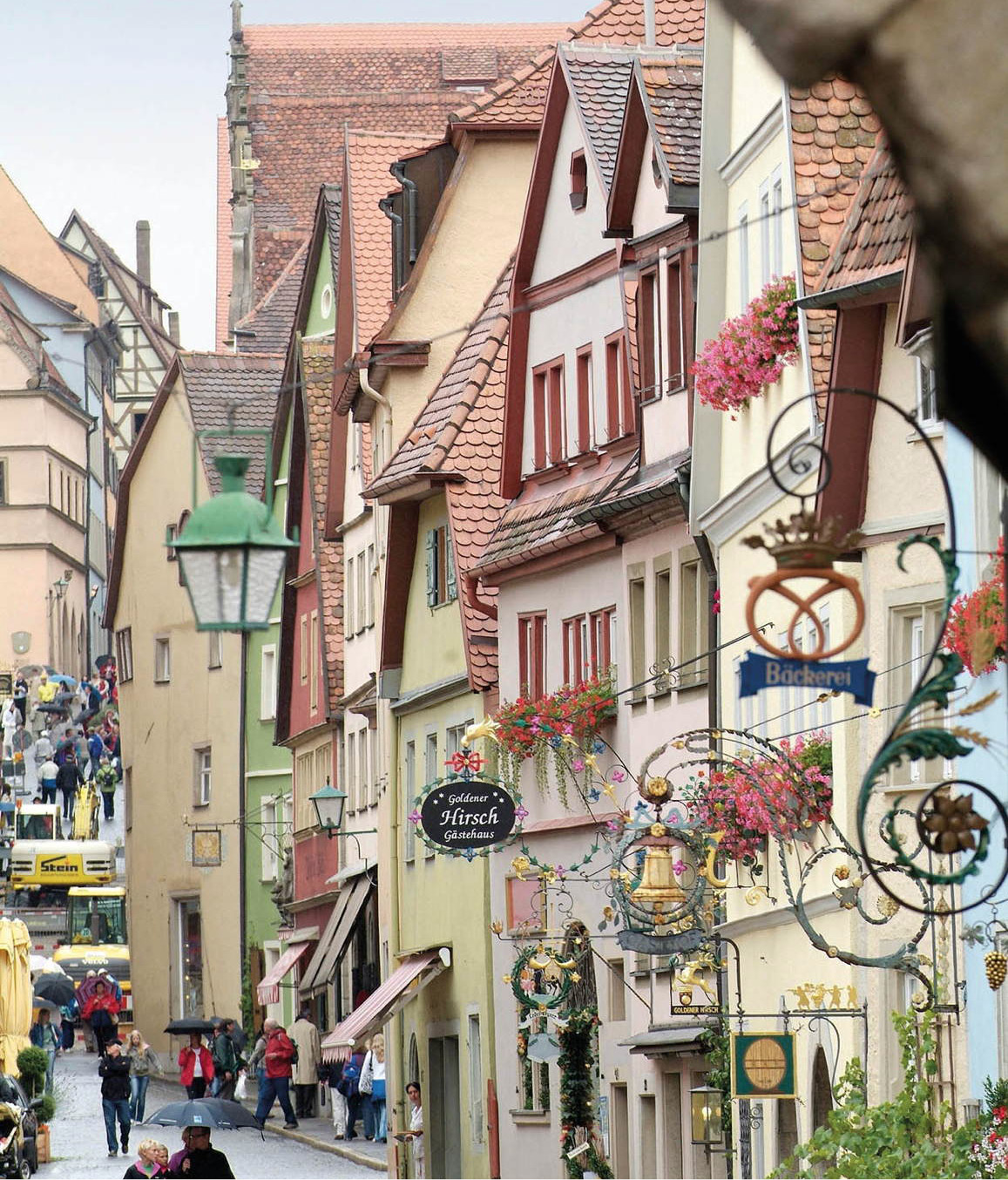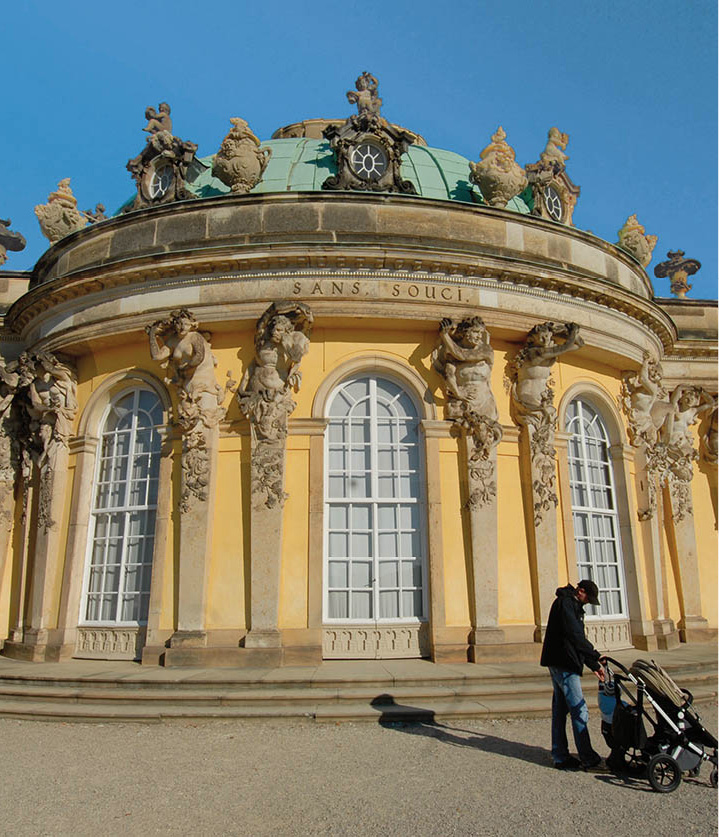Germany is the financial and industrial powerhouse of Europe. But behind the skyscrapers and beyond the industrial ribbon of the Ruhr, castles and countryside remain romantic and alluring. The land the country occupies is made up of peoples of greatly differing origins and characters. Aside from the slowly fading yet still “germane” gap between east and west, at the two extremes are the Prussians of the north, sombre and upright even if they have given up their spiked helmets and monocles, and the jolly Bavarians of the south, who are typically represented in lederhosen and chamois hats, swilling foaming tankards of beer. In between is the Swabian who lives in a neat cottage and keeps his carefully washed Mercedes in a garage, the Ruhr District miner (if he still has a job) who keeps pigeons in the colliery loft, and the Lower Saxony cattle farmer who warms his damp days with glasses of schnapps.

Flower-decked facades in Rothenburg.
Glyn Genin/Apa Publications
Urban areas in the east have been substantially rebuilt, refurbished and generally prettified since the Iron Curtain and the Berlin Wall came down in 1989, just as many of those in the west also had to be substantially rebuilt after World War II. Germany’s eastern cultural centres – Potsdam, Dresden and Weimar – are bustling centres of tourism once more, as are the largely unspoilt Baltic coast resorts.

Schloss Sanssouci in Potsdam.
Jon Santa Cruz/Apa Publications
The transport network is excellent. The major cities have airports, but it is just as practical and often quicker to travel by rail; the intercity trains generally run hourly, while the expanding network of high-speed ICE trains has reduced travel times dramatically. For a country that produces some of the world’s most prestigious and expensive cars, it is not surprising that the roads are good. If the autobahn pace becomes a bit nerve-racking (much of the motorway network has no speed limit), take the secondary roads, leading from one picturesque village to another. You may find a small country festival, for Germans are good at organising their fun, not just at the explosive springtime Cologne Carnival or the Munich October Beer Festival, but at any time of year.
